The original bento honors a Japanese eating philosophy called hara hachi bu, which says the goal of a meal is to be 80% full. That way, you don't stuff yourself, but instead keep some appetite for tomorrow.
Drawing from this philosophy, think about what you do each day: How can you prioritize and organize your day in a meaningful way that creates impact, but doesn’t cause an overload? You have your routine tasks, deadlines, meetings, travel, and so many other things to fit into each day.
With the right mix of ingredients, you can have a fulfilling and balanced diet. With the right mix of tasks, you can have a fulfilling and balanced job.
A compartmentalized learning approach
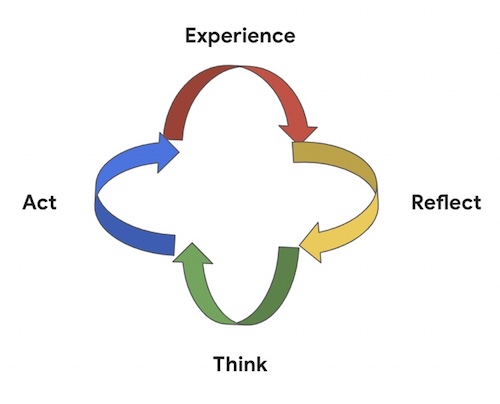
Imagine converting each day into a compartmentalized learning model – a learning process where you engage yourself in doing something and reflecting on the experiences you've had.
By using the concept and philosophy of a bento, here's how you can create a compartmentalized or experiential learning curve for yourself:
- Experience: Think about aspects of your work that you've learned and practiced, and how you've used various methods to solve problems.
- Reflect: By relating these to past experiences and learning, try and see how you can map these to the current situation.
- Think: Conceptualize your perceptions and assimilate all your findings.
- Act: By converging all the inferences from the previous steps, you take action and complete the task.
As we're on the topic of a bento box, let's draw out an example of a recipe. What you intend to cook as a dish is your goal for the day. Start by thinking about the ingredients you're familiar with and the cooking methods you've used with these ingredients. This is where you draw from your experience. With a strong coupling of ingredients and methods, you reflect on the dish you intend to cook. You put your ideas on the table and think about how you'd like to bring them together. Finally, you work on the dish and balance it all out to make a fulfilling and nourishing meal.
If you had to apply the bento box principles to your routine tasks, here's one of the ways you'd approach it (remember, it's not a one-for-all recipe!):
Let's say you've been assigned to work on a new product feature. Assuming that you're a new writer on the team, you start by gathering resources around the product. As collaboration is key to your role, you engage with product stakeholders to understand the user journeys for your product. With this information, you reflect on user aspects such as the information architecture, publishing channels, and documentation methodologies. You bring your analysis together with the help of documentation plans. You think about user deliverables; you put yourself in the user's shoes to determine the minimum viable scope for the feature. Finally, you get into action by authoring the docs and bringing all the content together.
What can feature in your bento?
A bento box approach shouldn't be considered as limiting your potential. It's a way for you to explore and learn but, at the same time, it allows you to keep balance.
When you start applying this approach to your work, you need to assess what ingredients or elements you'd like to work with. Remember, these elements can change over time based on the problem you're trying to solve. Once you become comfortable with using these elements, you start expanding your portfolio to work with more complex and ambiguous problems.
Tip: As a rule of thumb, I try to think about ways to organize and plan each day – just as how I'd plan my meal. Choosing the right elements for each day allows you to compartmentalize your learning curve and make it experiential. |
When I started using this approach in my work, I defined some categories that allowed me to fit multiple elements into each day. It seemed to fit my routine and helped me keep balance:
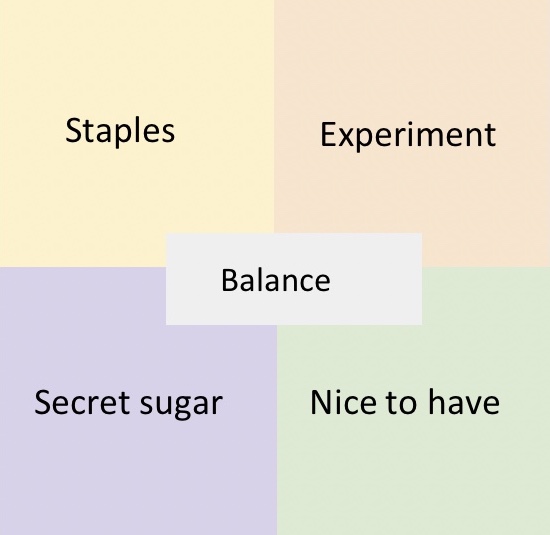
Figure 1: Elements in your bento
Staples: As the name suggests, this category is all about your routine work. It constitutes a dominant portion of your core job. You can think of this as your hero ingredient. It is what makes each day count. Some tasks featured in this category include:
- Authoring doc projects
- Managing and leading teams
- Creating a doc strategy for your product
Experiment: If you wish to expand your portfolio, exploration is crucial. It teaches you what can work versus what can't. It's a step towards learning new skills. Some aspects featured in this category can be:
- Researching new documentation methods
- Learning new tools
- Collaborating with teams
Nice to have: These are the sides that add extra flavor to your food palette. In this category, you include elements that act as supplements to your work. Think about how you can use your skills to make a wider contribution to your role. Try to look beyond the horizon and create an impact. Here are some supplements to consider:
- Networking
- Community contributions
- Mentoring
Secret sugar: With this category, you allow yourself to get creative and go back to doing what you love (you'd get a lot more ideas this way!). It brings out your inventive side. Remember, it's a way to add a surprise to your day. You'll unearth ideas that can become a part of your regular routine. Some potential areas include:
- Designing or sketching
- Facilitating or teaching
- Writing an article in a journal (just like this one!)
What kind of combos work?
How can we execute and balance these four categories?
As with every meal you cook, you realize along the way that there are challenges to face. That's when the art of compartmentalizing your cooking comes in. How can you adapt your meal by changing your ingredients along the way, but still ensure you keep balance? This is the most difficult, yet achievable goal.
As you keep working with the bento principle, you'll learn what kind of combos fit your bento or, in other words, the kind of tasks you need to include in your routine to keep it fulfilling and balanced (see Figure 2).
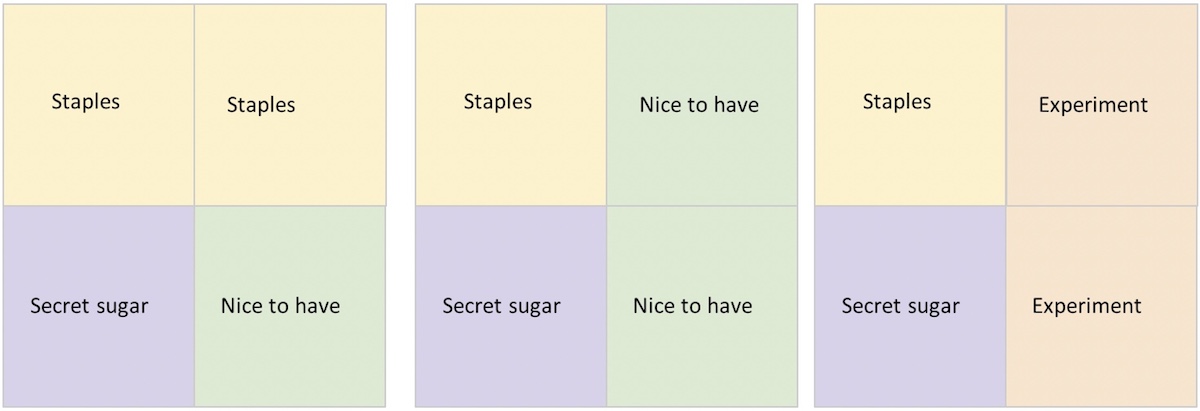
Figure 2: Different bento combos
Productivity tips to incorporate into your bento
With every ingredient you use, outline a strategy for your cooking. This is where making use of standard productivity tips can help you work efficiently throughout the process.
When you apply this philosophy to your work, a healthy balance of tasks throughout the day can help you be efficient. As you plan each day or week, the tasks you include will determine your workload. This list is going to increase with time. Having the tasks in there is not the problem. What we're trying to achieve is choosing the right number of tasks and focusing on these.
As with the concept of the bento, compartmentalizing your tasks is a great way to help you prioritize, make the execution more meaningful, and stay focused. One of the recommended approaches is to choose three tasks from your list and apply the bento philosophy to compartmentalize these tasks.
Task types
With a huge to-do list, you might wonder what's the best way to classify these tasks into categories. To help you narrow down to the top three tasks for each day, you can make use of the following task types:
Simple: This task type corresponds to familiar territory and one that comes with smaller wins. Some examples of simple tasks include responding to email, creating an agenda for a meeting, routine administrative tasks, and triaging doc issues.
Moderate: This corresponds to tasks that require a medium level of energy and focus, but doesn't require all your attention. Some parts of it might be familiar while some need additional focus. Some examples of moderate tasks can include feature enhancements, daily stand-up meetings, submitting expenses, and being a note-taker.
Complex: This corresponds to tasks for which you need absolute deep focus. It'll require you to have no distractions and have very minimal or no meetings. Some examples of complex tasks can include designing a doc structure, authoring a feature, resource planning for your team, and performance assessments for teams.
Productivity workflow
After you've classified your tasks under appropriate task types, the next step is to decide the type of productivity workflow you'd like to incorporate.
Whatever the chosen strategy, you must ensure that your time is used efficiently and productively. Here are some of the productivity methods that you can use:
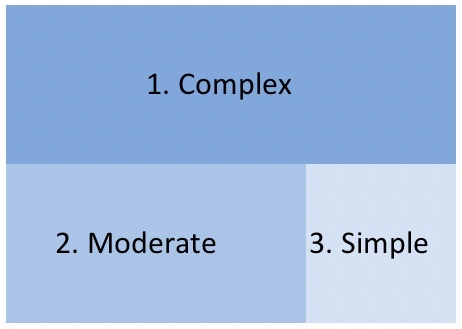
Eat the frog: This is a very popular and common productivity technique coined by Brian Tracy. You start by identifying your complex tasks and focus on finishing them first. You then move on to the moderate ones, and finish with the simple tasks. Starting your day early is one way to navigate through this method.
Reach the summit: For this method, you start with the moderate tasks. After you gain some momentum, you move on to the complex tasks and finish the day with the simple tasks.
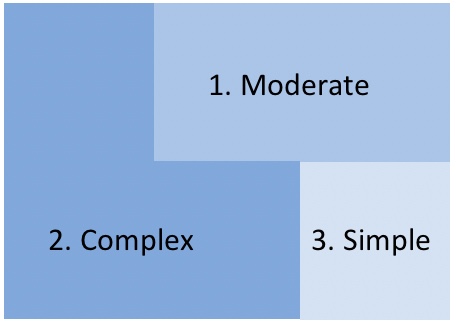
Slow burn: If you're the kind who likes to start your day at a slow pace, then this method is for you. It starts with simple tasks. You get into the groove and move on to moderate tasks and gradually step into solving the complex tasks.
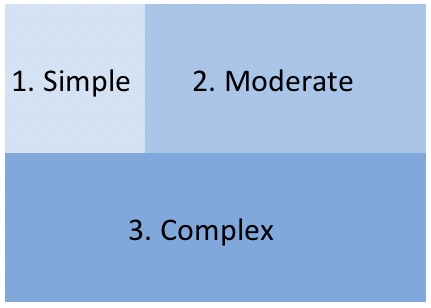
Time management
While there are a lot of ways to stay focused through your tasks, here are some recommendations of time management methods that you can apply to your bento after you have narrowed down the tasks for the day:
The art of saying “no”
To ensure that you don't lose focus or get sidetracked by a whole lot of other distractions, you must start getting comfortable with saying “no”. This can be awfully hard to put into practice! The skill lies in identifying the areas where you need to say “no”.
Throughout the day we're interrupted by various distractions such as emails, phone calls, notifications on social media, and online shopping, among so many others. When your to-do list keeps increasing, that's when it poses a threat to your productivity. Keep your list balanced and use your time in the best possible way (sans distractions!).
As business magnate Warren Buffett once said:
The difference between successful people and really successful people is that really successful people say "no" to almost everything.
The Pomodoro Technique
This time management technique allows you to work with the time that you have, rather than against it. You break your day into 25-minute chunks separated by 5-minute breaks. These intervals are referred to as Pomodoros. After about four Pomodoros, you take a longer break of about 15 to 20 minutes.
The timed 25-minute chunk creates a sense of urgency. It allows you to use this window to make as much progress on a task as possible. The 5-minute break makes the process feel more rewarding and helps cure any burn-out symptoms.
The Eisenhower Decision Matrix
The Eisenhower Decision Matrix (a.k.a. time management matrix), popularized by Stephen Covey, is perhaps the most popular model used in time management training. This matrix approach allows you to assign priority to your tasks by sorting them into quadrants based on dimensions of how urgent and important the task is. The quadrants correspond to doing a task, delegating a task, deferring a task, and dropping a task.
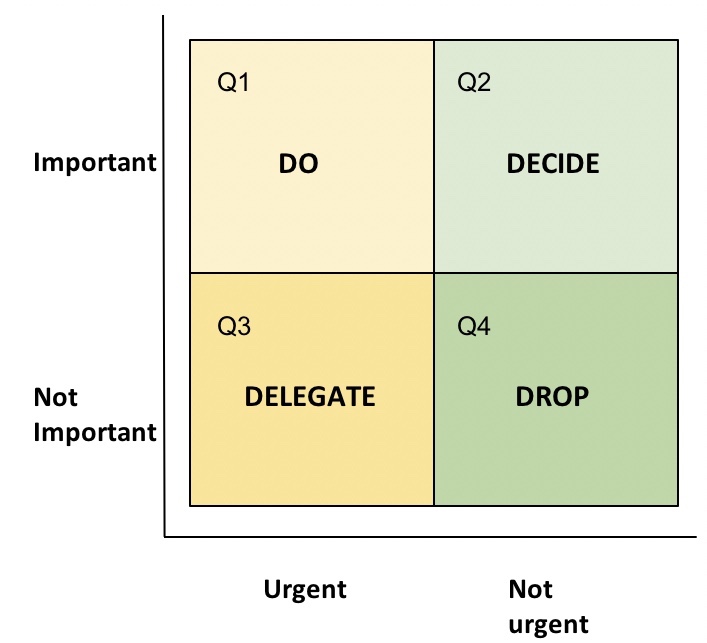
Keeping balance
To help you have an easy checklist for your day's bento, here's what you can use:
- Identify your key elements
- Divide each element into tasks
- Categorize and prioritize your tasks
- Apply productivity methods for each task
- Keep it all balanced
With this approach, you can create a bento for just about anything! Go ahead and create yours today!
References
- General reference to a bento box
- Using the bento methodology
- Forbes article on how doing less actually accomplishes more
- Productivity tips
- Pomodoro Technique

